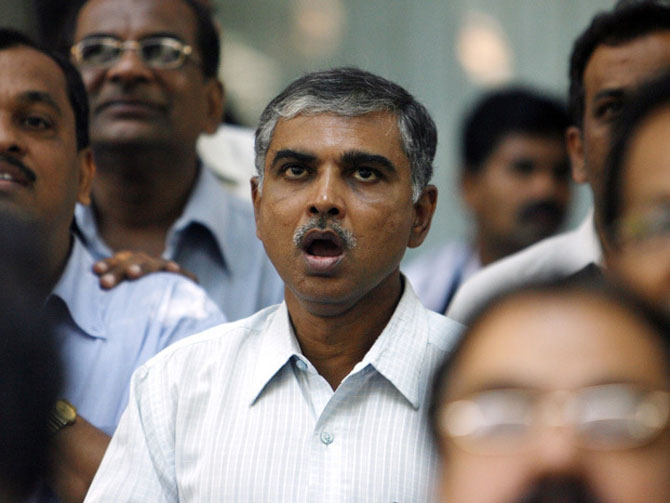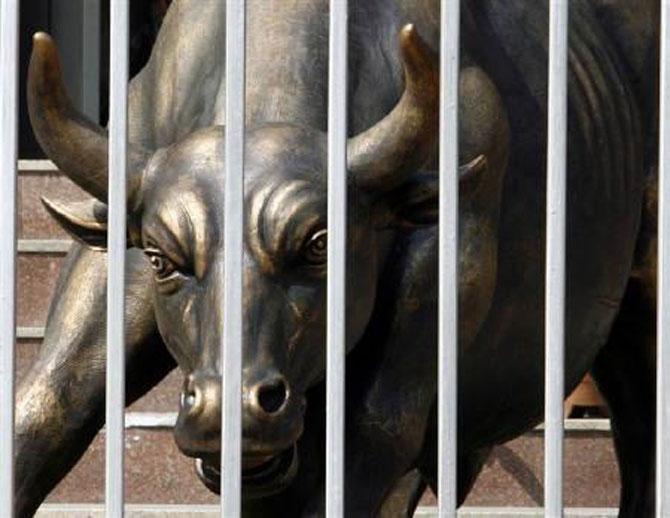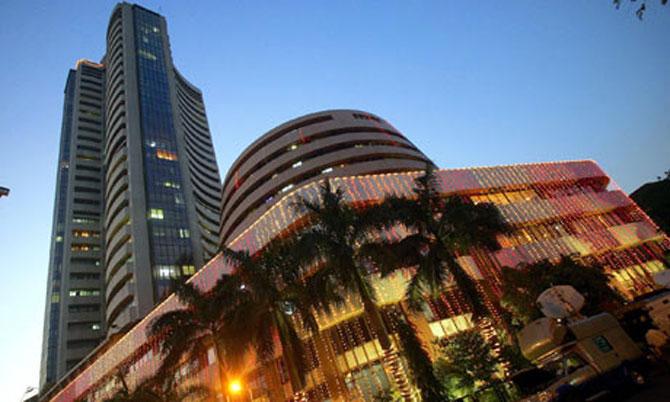 | « Back to article | Print this article |
Indices near new peak but lose premium tag
Equities shed superior valuations vis-à-vis most emerging markets
India’s economic crisis is costing its equities the superior valuations they enjoyed over most emerging markets until the previous bull run.
A comparison of the Sensex’s valuation on the basis of a popular ratio — price to estimated earnings per share (P/E) — with those of other leading Asian stock indices shows the premium on the Indian index has shrunk considerably over the past five years, even as it is closing in on their historic highs.
Hazy economic prospects, slowdown in investments and sluggish earnings growth have contributed to investors’ aversion to Indian stocks and a resultant compression in their value.
“India has lost its pre-eminent position in the minds of foreign investors and its treatment as a special asset class over the past few years, due to governance and growth issues,” says Sanjeev Prasad, co-head and ED, Kotak Institutional Equities. “It is viewed as one more emerging market,” he adds.
Click on NEXT for more...
Indices near new peak but lose premium tag
This is in sharp contrast with the situation in the past, when India could get away with expensive valuations on the grounds the economy was growing at a faster pace than most others.
A Business Standard study on three phases since January 2008, when the Sensex traded near its record highs, confirms this.
In November 2010, the Sensex was trading at 16.6 times P/E, almost at an average of 20-22 per cent premium to other Asian emerging markets. Now, the Sensex’s P/E of 13.3 times is on a par with or even below those of its peers. The exception is China’s Shanghai Composite, which has seen a sharper erosion in value than the Sensex over the past three years.
“India is trailing the EM (emerging market) universe significantly, and small-caps have fared even worse as a result of elevated risk-aversion, a significantly weaker rupee and a generally pessimistic earnings outlook,” says Julie Dickson, a London-based equities product manager at Ashmore Investment Management.
Click on NEXT for more...
Indices near new peak but lose premium tag
Portfolio managers say the Sensex’s current forward PE, of about 13 times, reflects India’s economic growth of five per cent. “There is absolutely no froth in the valuation, given that retail investors and speculators are virtually absent from the market,” says portfolio manager Sandip Sabharwal.
The Sensex’s valuations would have been compressed further, but for the strength in consumer goods, information technology (IT) and pharmaceutical companies, which together account for 38 per cent of the index’s total weight. Shares of companies in these sectors have remained resilient in recent months because of their stronger earnings growth.
Does lower valuation mean buy? Not necessarily, say portfolio managers. “Valuations have certainly come down and are now significantly cheaper than at the end of last year but the earnings outlook remains murky,” says Ashmore’s Dickson.
Analysts say valuations would expand from here, but only if earnings grow correspondingly, as the US Federal Reserve’s withdrawal of its monetary stimulus early next year might put an end to stocks chasing easy money.
This could lead to further correction in some weaker sectors. Most investors would stick to shares of exporters or firms that benefit from a weaker rupee, they add.



